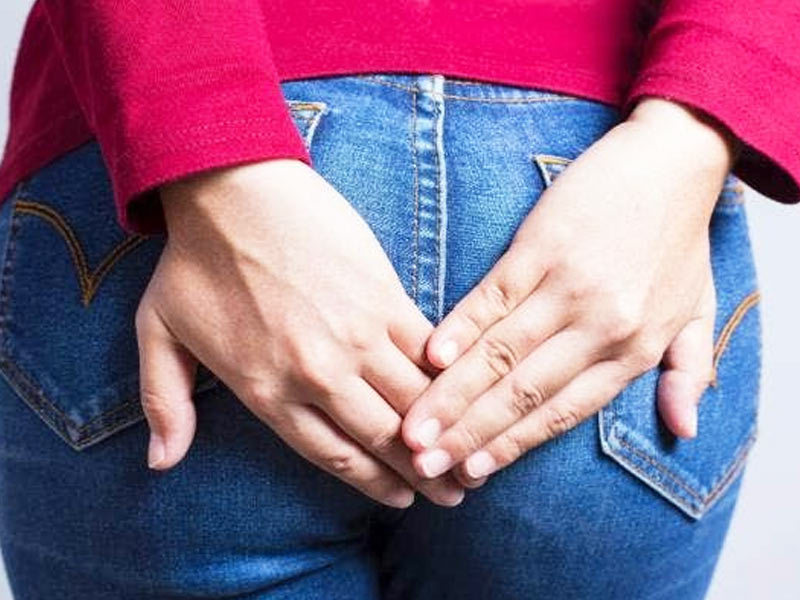
Pilonidal Sinus is an abnormal pocket or a cleft between the buttocks just below the base of the spine that may develop due to a variety of reasons including hormonal or genetic ones. Some people maybe born with these small pits near the tailbone which are basically enlarged hair follicles. This may also happen due to sedentary lifestyle or tight clothing. If you have discomfort sitting or reddening of the skin around the area, having fever or nausea, you should not ignore the symptoms. Dr. Rajan Modi, Minimal Access Surgeon, and Laparoscopy Surgeon, House of Doctors explains the causes, symptoms and treatment of the chronic skin issue.
Table of Content:-
Also Read: Your Sedentary Lifestyle Can Land You In ICU in case of COVID Infection. Doctor Explains Why
What Is Pilonidal Sinus?
A pilonidal sinus is a pocket or a small cyst in the skin which generally develops near the tailbone, the top of the cleft of the buttocks. The word pilus means hair and nidal means nest. When a nest of hair forms in the opening, it can cause infections and can be really painful if not treated properly. In most cases, it consists of dirt, hair and debris.
Pilonidal sinuses are more common in:
- Men and in young adults.
- It can also develop in people with prolonged sitting hours and sedentary lifestyle.

Causes Of Pilonidal Sinus
While there are no exact causes of a pilonidal sinus, there are certain factors that may contribute in their development. These include:
- Change in hormone levels
- Excess hair growth in the buttock area
- Friction from tight clothing
- Prolonged sitting hours
Symptoms Of Pilonidal Sinus
If you are facing discomfort sitting, or having pain in the area around buttocks, you must not take your symptoms lightly and get checked for Pilonidal Sinus. Overlooking the symptoms and not receiving the correct treatment can make the pilonidal sinus even worse. Do not ignore the below-mentioned symptoms:
- Mild to extreme pain
- Discomfort while sitting
- Reddened area
- Drainage of pus from the abscess
- Drainage of foul-smelling liquid
- Fever and extreme fatigue
- Nausea or vomiting
Also Read - Butt Acne: Why It Is Caused And How You Can Get Rid Of It
A pilonidal sinus may seem harmless initially but can gradually turn infectious and problematic. Delaying the treatment can affect your daily life and can lead to the following issues:
- Inability to sit due to pain
- Pain even while walking or lying down
- Spreading of infections to other parts
- Formation of multiple internal tracks
- Development of sinus cavities

Pilonidal Sinus Diagnosis And Treatment Options
The treatment of pilonidal sinuses depends on the nature of the cyst. Your doctor may examine your cyst carefully to provide you with the treatment options which best suit your needs. Dr. Modi says the following treatment options are available at House of Doctors:
Cyst drainage: This procedure requires lesser time. The surgeon makes a small incision (cut) and drains the fluid from your infected sinus.
Antibiotic treatment: If you are not experiencing any severe symptoms then the doctor prescribes you antibiotics. They can only treat skin inflammation. However, antibiotics can't treat pilonidal cysts completely.
Laser therapy: One of the most advanced, safe and easy proctological surgical methods. In this method, the surgeon removes the ingrown hair and prevents the cyst from recurring.
Pilonidal Laser Treatment
While there might be a range of pilonidal sinus surgery options available, laser treatment methods are better considering they promise painless surgery and hasslefree procedures. The surgical procedure for a recurring pilonidal sinus for multiple sinus tracts is an amalgamation of laser techniques and minimally invasive procedures which increases the success rate of the surgery, makes it safer and reduces the chances of recurrence.
Laser treatment comes with many advantages over conventional surgery:
- 1-day hospital stay
- 40 minutes process
- Quick recovery, faster healing
- No loss of blood
- No cuts or scars
- Complete cure
- No recurrence
- Painless method
Pilonidal sinuses can be troublesome and can cause immense discomfort if they develop pain. Therefore, choosing the right pilonidal sinus treatment option is essential.
Read More Articles On Other Diseases
Also watch this video
How we keep this article up to date:
We work with experts and keep a close eye on the latest in health and wellness. Whenever there is a new research or helpful information, we update our articles with accurate and useful advice.
Current Version